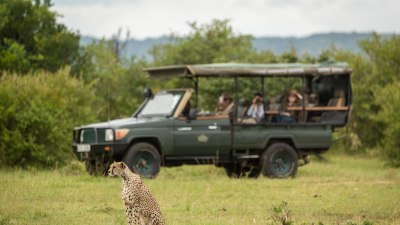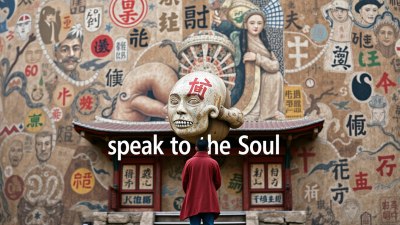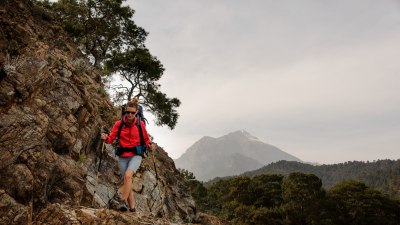The Remote Villages Where Locals Still Live Like Centuries Ago
Explore remote villages where ancient traditions thrive and life remains untouched by modernity.

This image was created with the assistance of Freepik
In a world that is rapidly advancing with technology and urbanization, there exist pockets of humanity that have retained their ancient ways of life. These remote villages, often tucked away in the mountains, forests, and by the riversides, offer a glimpse into the past where lifestyles have changed little over the centuries. This exploration of remote villages takes you through varied cultures and practices that are often overlooked in today’s fast-paced society.
1. The Village of Tanna, Vanuatu
Located in Vanuatu, the village of Tanna provides an extraordinary insight into the traditions of the Indigenous people known as the Kastom. Here, the locals live according to pre-colonial customs that are vastly different from the modernized world. The Tannese people practice subsistence agriculture, relying on crops such as taro and yam, while living in thatched huts. Their belief system is intertwined with the active volcano, Mount Yasur, which they consider sacred.
2. The Indigenous Tribes of the Amazon Rainforest
Deep within the Amazon, tribes such as the Yanomami and the Kayapo maintain a lifestyle that is intricately linked to nature. These communities rely on hunting, fishing, and gathering, using traditional methods passed down through generations. The Amazon rainforest is their pharmacy and grocery store, full of medicinal plants and food sources. Modern influences are gradually encroaching upon their lands, yet many indigenous villagers strive to preserve their traditional practices.
3. The Sami People of Northern Europe
The Sami are an Indigenous group inhabiting parts of Norway, Sweden, Finland, and Russia. They are known for their reindeer herding, a practice that has been honed over centuries. In contrast to the urban lifestyles surrounding them, the Sami maintain a close relationship with nature and their herds, which are vital for their livelihood. Traditional clothing, known as gákti, is worn during cultural festivities, demonstrating their rich heritage.
4. The People of the Himba Tribe, Namibia
The Himba tribe, found in the arid regions of Namibia, is famous for its unique customs and attire. Women of the Himba tribe adorn themselves with otjizō, a mixture of butterfat and ochre pigment, giving their skin a reddish hue. Their communal lifestyles involve herding cattle and engaging in ritual ceremonies that reflect their spiritual beliefs. Despite modernity creeping closer, the Himba people hold fast to their ancestral ways.
5. The Tibetan Nomads
In Tibet, nomadic tribes such as the Khampas have lived in harmony with the rugged landscape for centuries. They migrate with their yaks, primarily focusing on animal husbandry and subsistence farming. Their homes are often portable tents, allowing them to move seasonally. Despite the challenges posed by political changes and climate variations, Tibetan nomads hold onto their traditional practices and cultural identity.
6. The Maasai of East Africa
The Maasai people, renowned for their distinctive dress and customs, inhabit the grasslands of Kenya and Tanzania. Living as semi-nomadic herders, the Maasai herd cattle, sheep, and goats, which are central to their social and economic structure. Land disputes and modernization threaten their way of life, yet they maintain their age-old practices, ceremonies, and community bonds.
7. The Villages of Bhutan
Bhutan is often referred to as the last Shangri-La, a place where modernity intertwines with tradition. The rural villages of this Himalayan kingdom continue to practice Buddhism and agriculture in a traditional manner. Their homes are built in a unique architectural style, reflecting their cultural heritage. Festivals, known as tsechus, celebrate local deities and encourage community participation.
8. The Berber Tribes of Morocco
Deep in the Atlas Mountains, the Berber communities maintain a lifestyle that fuses agriculture, crafts, and traditional music. Living in earthen homes, these tribes practice farming and herding, keeping their customs alive through storytelling and handcrafted goods. The Berbers' rich oral history and traditions are passed down through generations, showcasing their resilience against modernization.
9. The Ainu of Japan
The Ainu people are the Indigenous inhabitants of Hokkaido in Japan, where they have preserved their unique language and spiritual beliefs centered around nature. Hunting and fishing are pivotal to their livelihood, and they conduct traditional ceremonies to honor their ancestors and the spirits of the animals they catch. Efforts are being made to revitalize and protect Ainu culture amidst Japan's rapid modernization.
10. The Galicians of Spain
In the remote region of Galicia, the locals maintain a lifestyle that emphasizes agriculture and traditional crafts. Their unique language, music, and festivals showcase a culture that values community and connection to the land. Despite Spain's industrial advancements, Galician traditions thrive, demonstrating how cultural identity can persevere against the tide of change.
11. The Inca Descendants of Peru
In the highlands of Peru, descendants of the Inca civilization continue to uphold their agricultural practices, including terraced farming techniques that have stood the test of time. Markets in towns like Pisac display hand-woven textiles and traditional foods, showcasing the Inca heritage. Festivals celebrate the agricultural calendar, reminding the community of their ancient lineage and bond with the Earth.
12. The Isolated Communities of Mongolia
In the vast steppes of Mongolia, nomadic communities such as the Dukha continue to live as their ancestors did. Horse herding and traditional crafts are key components of their lifestyle. Their existence is marked by seasonal migrations, and their homes, known as gers, are designed for easy relocation. Even in the face of modernization and urban migration, these communities strive to uphold their unique cultural standards.
13. The Villages of the Scottish Highlands
The Highlands of Scotland are home to communities that cherish their Gaelic heritage. Many villages uphold traditional farming and fishing practices, while music and dance remain integral forms of expression. Despite the allure of city life, there are those who choose to nurture their connection to the land and culture, celebrating the languages and customs passed through generations.
14. The Cultural Events
In these remote villages, cultural events and festivals play a significant role in preserving traditions. From harvest festivals to spiritual ceremonies, these occasions bring communities together, allowing them to celebrate their roots and history. Locals engage in dances, music performances, and exhibits showcasing their crafts, creating a vibrant tapestry of culture that captivates visitors and sustains community identity.
15. Challenges and Preservation
As globalization spreads, these villages face challenges that threaten their way of life. Pressures from industrial development, climate change, and the allure of urban living pose significant risks. Communities are striving to find a balance between embracing necessary changes and preserving their rich heritage. Efforts from non-profit organizations, governments, and the communities themselves aim to protect these cultures for future generations.
While the world around us speeds toward modernization, the remote villages described here remind us of the beauty of human tradition. Each community thrives on its own terms, celebrating its cultural identity and adhering to centuries-old practices. Visiting these villages offers invaluable insights into the diverse fabric of humanity and highlights the importance of preserving our world's varied cultures. As stewards of our traditions, it’s our responsibility to ensure that these remarkable lifestyles continue to survive and flourish amidst an ever-changing world.











